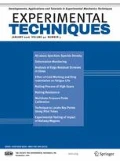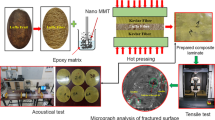Abstract
The performance of the color asphalt binder plays an essential role in the performance of asphalt concrete, especially for color durability and high-temperature stability. The color pavement is particularly prone to fading, rutting, crowding, and other diseases during service time. Based on this idea, firstly, this study aims to mix four different color asphalts with pigments, which were tested by the rotating thin film oven test (RTFOT) and the pressure aging vessel (PAV) test for short-term and long-term aging. The primary purpose of this study is to describe the high-temperature performance and temperature sensitivity. A certain amount of styrene–butadiene–styrene block copolymer (SBS) was respectively added to the light-color asphalt and base asphalt. The viscosity and rheological properties were tested under different temperatures using Brookfield rotating viscometer. The rheological properties were tested under different temperatures by dynamic shear rheometer. The test results indicated that the four kinds of color asphalt had the same weakening trend of the color vividness index (P) after RTFOT and PAV aging. The SBS modifier can improve the bonding performance of the compound color asphalt and Ke La Ma Yi. The apparent viscosity of the eight asphalts decreases as the temperature increases. The shear rate had a more significant influence on the viscosity of the modified asphalt. For the same kind of asphalt, under the same temperature condition (135 °C, 145 °C, 155 °C, 165 °C, 175 °C), the percentage of viscosity change in the adjacent shear speed range gradually increases.







Similar content being viewed by others
Data Availability
Some or all data, models, or codes that support the findings of this study are available from the corresponding author upon reasonable request.
Code Availability
Not applicable.
Change history
04 March 2022
A Correction to this paper has been published: https://doi.org/10.1007/s40799-022-00557-6
References
Zhao L, Zha R, Hen Q et al (2018) Rheological properties of SBS modified color binders for asphalt concrete pavement. J East China Univ Sci Technol 1:21–27 In Chinese
Tang P, Mo LT, Pan CL et al (2018) Investigation of rheological properties of light-colored synthetic asphalt binders containing different polymer modifiers. J Constr Build Mater 161:175–185 In Chinese
Zhu X (2010) Research on highway visual space and in the application of landscape planning. The Degree of Doctoral Dissertation of South China University of Technology, Guangzhou In Chinese.
Gao H, Li J, Luo L (2004) Study on the preparation technology of modified color asphalt. Petroleum Asphalt 18(5):19–21 In Chinese
Chen CC (2012) Research on color asphalt and color asphalt mixture performance. Master’s thesis of Chang’an University, Xi’an In Chinese
Zhou YM (2019) Study on the application technology of two-component colored ceramic particle bus lane color pavement. J New Build Mater 46(7):144–149 In Chinese
Zhao XY (2019) Study on performance of SBS modified colored asphalt and permeable asphalt mixture. J Highway 64(3):251–255 In Chinese
Xu P, Chen HX, Mi HC et al (2019) Comparative analysis of low-temperature rheological properties of colored asphalt based on force ductility measurement. J Mater Sci Eng 37(2):120–124 In Chinese
Wang YQ, Xu P, Mi HC (2020) Analysis of the relationship between chemical composition and thermal behavior of colored asphalt cement. Silic Bull 39(1):332–336 In Chinese
Lu L, He Y (2018) Warm mix agent influence on color asphalt and mixture property. Municip Technol 2:201–203 In Chinese
Xi H (2013) Research on the economical colored asphalt binder and mixture’s pavement performance. Master’s thesis of Chang’an University, Xi’an In Chinese
Le F (2015) Study on new technology of colored asphalt pavement. Road Constr Mach Constr Mech 32(6):61–65 In Chinese
Zhai J, He H (2017) Exploration of grid management of safety production in the highway transportation industry. China Highway 23:88–89 In Chinese
Zhang X (2016) Analysis of quality problems in highway asphalt pavement construction. Jiangxi Build Mater 2:170–170 In Chinese
Cao L (2012) Analysis of application of color asphalt in my country. Shanxi Constr 38(10):132–133
Zhang L (2019) Research on high and low-temperature performance of modified colored asphalt. Urban Roads Bridges Flood Control 1:181–184 In Chinese
Yu L (2016) Research on modified asphalt with polyphosphoric acid compound rubber powder. J China Foreign Highway 3:273–277 In Chinese
Duan X, Zhang X, Wei J et al (2015) Analysis of characteristics of distribution and change of temperature at orchard in arid areas. Ningxia Agric Forest Sci Technol 56(02):58–63 In Chinese
Liu W (2013) Prediction of rut on asphalt pavement based on non-deterministic burgers mode. Chongqing Jiaotong University, Chongqing In Chinese
Papagiannakis AT, Zelelew H, Mahmoud E (2018) Simulation of asphalt concrete plastic deformation behavior. J Mater Civ Eng 20(3):1–6. https://doi.org/10.1061/(ASCE)mt.1943-5533.0002181
Zhang X, Gu X, Lv J et al (2017) 3D numerical model to investigate the rheological properties of basalt fiber reinforced asphalt-like materials. Constr Build Mater 138:185–194 In Chinese
Li WL (2019) Research on rutting prediction model of asphalt pavement based on burgers model. Highway 64(8):16–22 In Chinese
You QL, Ma JL, Liu X (2018) An experimentally-based viscoelastic behavior of asphalt mastic at high temperatures. Constr Build Mater 177:358–365 In Chinese
Liao MC, Chen JS (2011) Zero shear viscosity of bitumen-filler mastics. J Mater Civ Eng 23(12):1672–1680
Underwood BS, Kim YR (2015) Nonlinear viscoelastic analysis of asphalt cement and asphalt mastics. Int J Pavement Eng 16(6):510–529
Jiménez FP, Recasens RM, Martínez A (2008) Effect of filler nature and content on the behavior of bituminous mastics. Road Mater Pavement Des 9(suppl 1):417–431
Standard test methods of bitumen and bituminous mixtures for highway engineering. Research Institute of Highway Ministry of Transport: Beijing, China (2011) In Chinese
Color Asphalt Concrete. China Standards Press: Beijing, China, 2016. In Chinese
Colored asphalt binder. Research Institute of Highway Ministry of Transport, Beijing, China (2017) In Chinese
Technical specification of construction of highway asphalt pavement; Research Institute of Highway Ministry of Transport, Beijing, China (2004) In Chinese
Wei JW (2016) Experimental research on pavement performance and durability of color asphalt mixture. Subgrade Eng 5:106–108 In Chinese
Chen J, Huang X (2007) Study on hypostasis and relationship between viscosity and consistency of asphalt. Pet Asphalt 4:40–44 In Chinese
Technical specification for determination of SBS content in modified bitumen with FTIR. China Communications Press, Beijing, China (2017) In Chinese
Technical specification for testing content of modified asphalt SBS modifier for asphalt pavement. China Standards Press, Beijing, China (2019) In Chinese
Qin H (2019) Study on regeneration performance and regularity of SBS modified asphalt. Master Thesis of the South China University of Technology In Chinese
Zhang TT (2017) Study on the aging and recycling rules of SBS modified asphalt. Master's Thesis of China University of Petroleum, Guangdong (East China)
Ding QY (2017) Research on aging and recycling performance of SBS modified asphalt. China University of Petroleum (East China), Master's thesis. In Chinese
Wang JP, Zhang Y (2018) Study on preparation and technical performance of colored high viscosity asphalt. Highw Traff Technol 5:75–76 In Chinese
Li LH (2018) Road engineering materials, 6th edn. People’s Communications Press Beijing, China
Xu M (2013) Determination of construction temperature of modified asphalt and its influence on road performance. Chang’an University, Xi’an In Chinese
Liu L (2005) The research on high-temperature performance parameter of asphalt binder. Master Thesis of Changsha University of Science &Technology, Changsha In Chinese
Li C (2017) Application research of the coal qualification residue in asphalt treated base. Master Thesis of Chang’an University, Xi’an In Chinese
Xu J (2008) Research on oil corrosion of TLA modified asphalt and its mixture. Master Thesis of Changsha University of Science and Technology, Changsha In Chinese
Funding
This work was supported by the < Natural Science Foundation of Gansu Province, China > under Grant [No. 175R5RA288]; the < Higher Education Innovative Ability Improvement Project of Gansu > under Grant [No. 2019B-027].
Author information
Authors and Affiliations
Contributions
Conceived of and designed the experiments, CC; Data curation, WZ, YM, and ML; Formal analysis, CC, and HW; Funding acquisition, CC, and HW; Methodology, CC, and HW; Software, YM; Writing—original draft, CC, and HW.
Corresponding authors
Ethics declarations
Conflicts of interest
The authors declare no conflict of interest.
Additional information
Publisher's Note
Springer Nature remains neutral with regard to jurisdictional claims in published maps and institutional affiliations.
The original online version of this article was revised: The article, Investigation of High Temperature Performance and Viscosity Characteristics of Modified and Unmodified Color Asphalt, by C. Chen, H. Wu, and C. Zhang, was submitted and accepted for publication in a special issue on "Computations & Experiments on Dynamics of Complex Fluids and Structure." It was included in the April 2022 issue of Experimental Techniques due to an error in production. When the special issue is published, there will be a statement and reference to the previously published article.
Rights and permissions
About this article
Cite this article
Chen, C., Wu, H., Zhang, W. et al. Investigation of High Temperature Performance and Viscosity Characteristics of Modified and Unmodified Color Asphalt. Exp Tech 46, 317–333 (2022). https://doi.org/10.1007/s40799-021-00507-8
Received:
Accepted:
Published:
Issue Date:
DOI: https://doi.org/10.1007/s40799-021-00507-8




